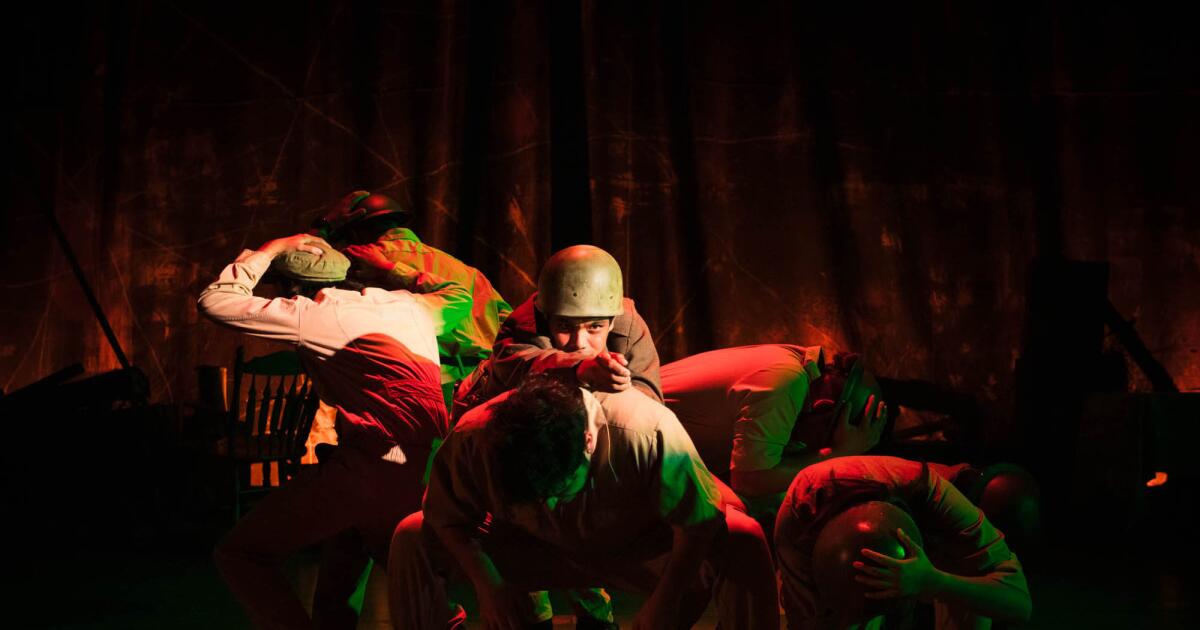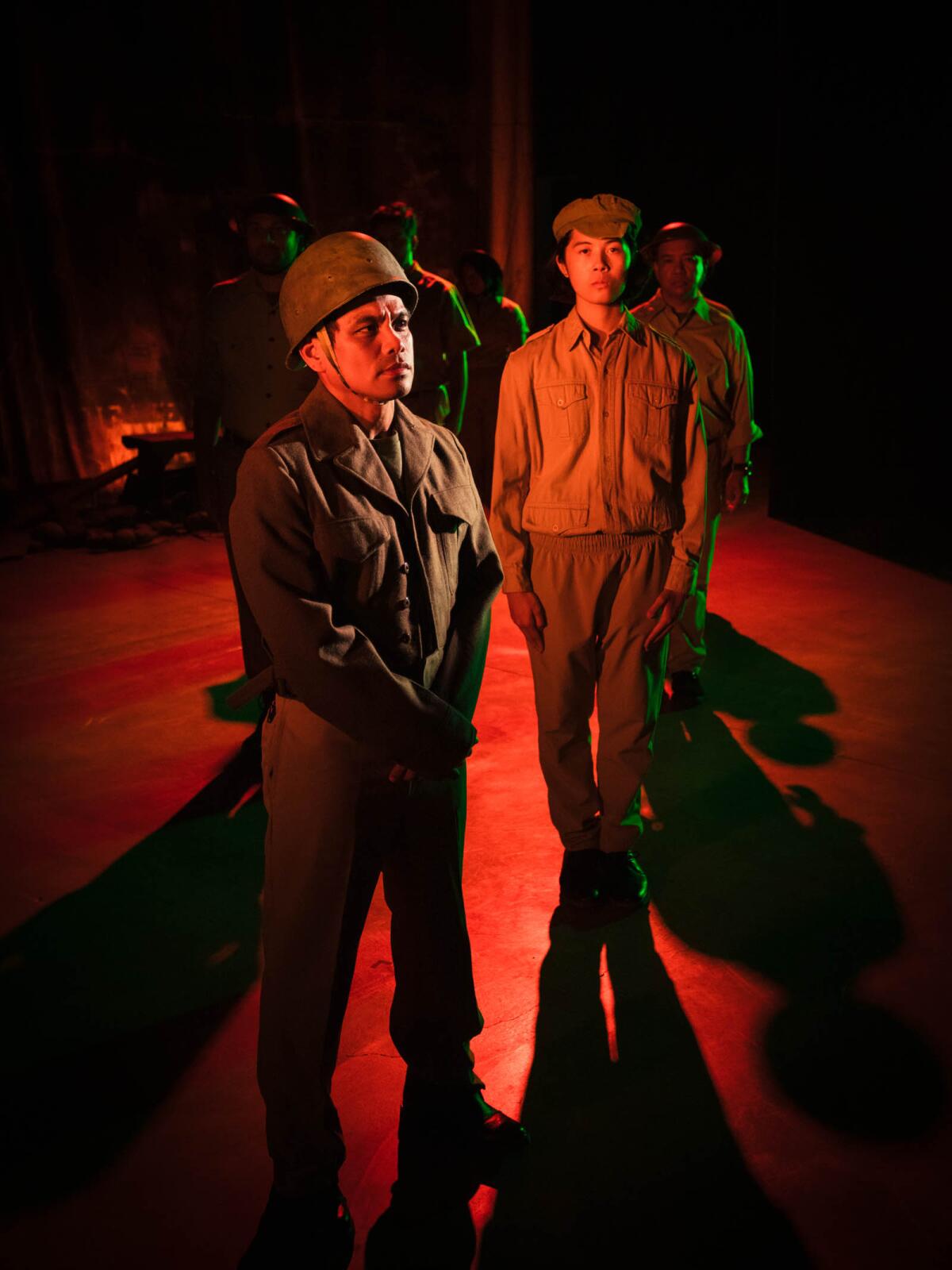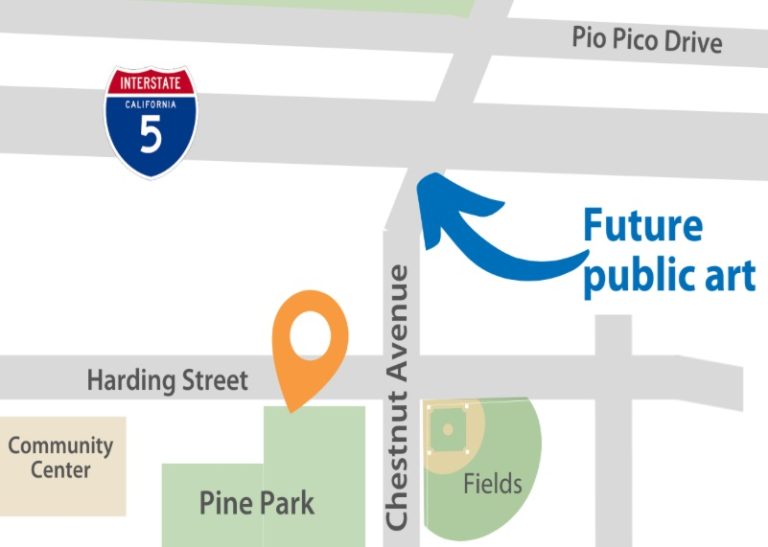
San Diego may have one of the largest populations of Filipino Americans in the United States, but most locals probably don’t know the history of valor (or “kagitingan” in tagalog) displayed by the tens of thousands of Filipino men who fought and died alongside American troops during World War II.
Yet despite their heroism, these veterans were denied the benefits and citizenship they were promised by the U.S. government during the war. In recent decades, the U.S. has begun to compensate these men, but countless numbers died before these concessions were made and many had their claims denied. Their experiences are told in Blindspot Collective’s production of local playwright Jamiliz Valiente-Neighbours’ documentary play “Kagitingan,” which just finished up a two-weekend run at the new arts hub space at the Museum of Contemporary Art San Diego-Downtown.
Directed and edited by Desha Crownover and Blake McCarty and featuring an all-BIPOC cast, the 80-minute play mixed poignant memories of battle with thrilling scenes of athletic dance-movement choreographed by Theresa Maigue Bendorf. Despite the stories of torture, injuries and injustices these veterans experienced, “Kagitingan” is balanced with uplifting scenes of the honor these men felt about their service, the camaraderie they shared with U.S. soldiers and — for many — their pride they have as naturalized U.S. citizens.
Valiente-Neighbours, an assistant professor at Point Loma University and the granddaughter of a Filipino WWII vet, based her play on more than 80 interviews she conducted with these neglected vets in the U.S., Hawaii and the Philippines. In her play, an actor (Dey Ilagan) played a Filipina researcher like herself interviewing veterans about their experiences and gradually these memories came to life onstage.

A scene from Blindspot Collective’s “Kagitingan.”
(Courtesy of Elliott Hefner)
The choreography — a mix of contemporary movement and two tradition Filipino dances, the maglalatik (a percussive dance performed with coconut shells strapped to the body) and tinikling (where dancers hop between two clicking bamboo poles) — was a critical element that pulled the whole show together cohesively.
Most of the 13-member cast played multiple roles re-enacting memories from happy childhood to horrific battle experiences to old age and infirmity. Many of their stories are similar. They lived simple existences before the war — farming, raising goats, working in restaurants — before Japan invaded the Philippine Commonwealth the day after it attacked Pearl Harbor. U.S. Gen. Douglas MacArthur later recruited them to fight alongside U.S. troops as scouts, soldiers, guerrilla fighter, truck drivers and more.
When the Japanese defeated the Allied forces at the Battle of Bataan in 1942, more than 10,000 men — roughly 1,000 Americans and 9,000 Filipinos — died during the death march to their prison camps. Yet despite their equality on the battlefield, the Filipino servicemen were forced to eat, sleep and be imprisoned in segregated areas and they endured racist attacks. In 1946, Pres. Harry Truman — likely fearful of the economic impact on the U.S. post-war economy — passed the Rescission Act, which revoked the Filipino soldiers’ right to benefits.
Toward the end of the play, the actors turned to face the audience in agitprop style, demanding attention, action and respect for the surviving veterans and more awareness about the sacrifices they made. Standout performers included Bong Cabrera, Samuel Young, Frank Kensaku Saragosa, Joseph Corrales and Jonathan Nagtalon. Hsi An Chen designed scenery, Eliza Vedar created original music and sound and Michael Barahura designed lighiting.
“Kagitingan” had a fully sold-out run, so it would be nice if the play could be brought back again for future productions to shed more light on this story too long in the shadows. To learn more about the play, visit blindspotcollective.org.







